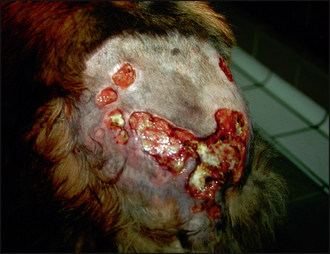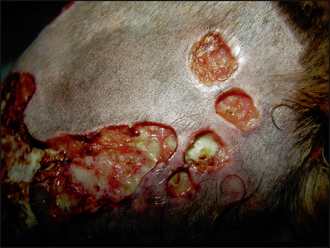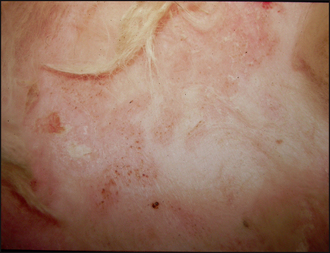34 Vasculitis
CASE HISTORY
The history in this case was as follows:
CLINICAL EXAMINATION
Vasculitis can be associated with a wide variety of clinical signs. Damage to dermal and mucosal vessels results in leakage of contents and infarction. The signs of cutaneous vasculitis reflect this, and include petechiation, ecchymoses, purpura, subcutaneous oedema, scaling, alopecia, erosions, ulceration, necrosis and scarring. There may be substantial areas of necrotic tissue depending on the size of vessel involved. In addition, there are vasculitis syndromes in man and domestic animals involving vasculature of internal organs, and therefore many different systemic clinical signs can arise depending on the organ(s) involved. Clinical signs may also reflect an underlying disease process such as a connective tissue disease, infection or neoplasia. Systemic signs can include fever, anorexia, glomerulonephritis, polyarthropathies, myopathies, retinitis, uveitis, neuropathies, gastrointestinal signs, pancreatitis, epistaxis, and pleural and peritoneal effusions.
The clinical signs in this case were as follows:
CASE WORK-UP
The following diagnostic tests were performed:
Stay updated, free articles. Join our Telegram channel

Full access? Get Clinical Tree





